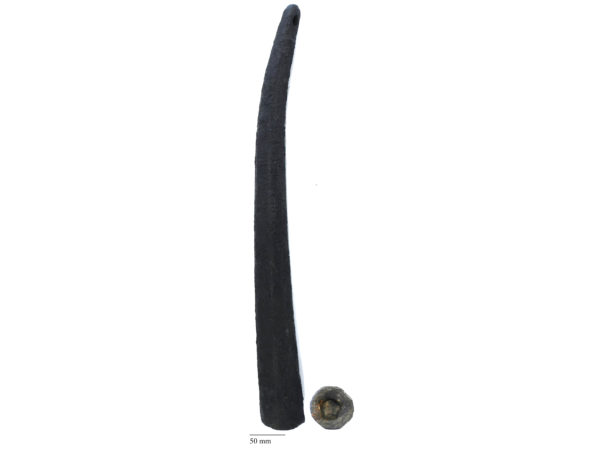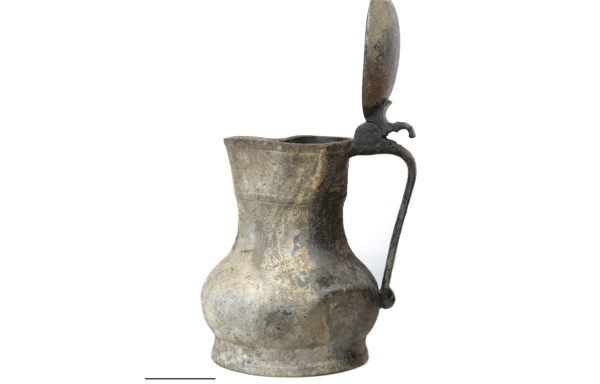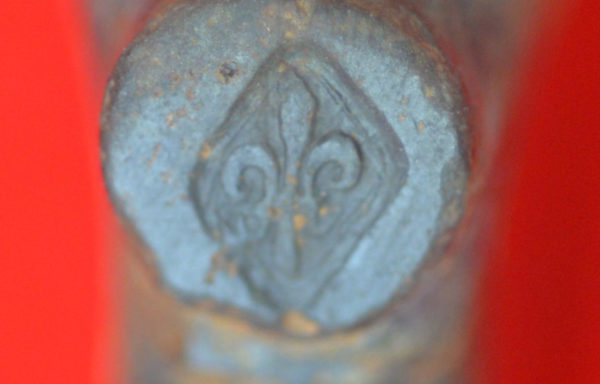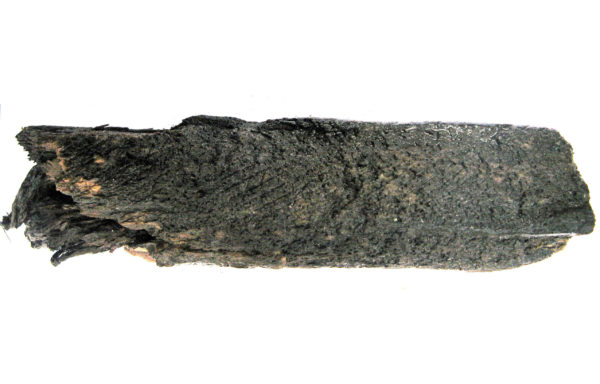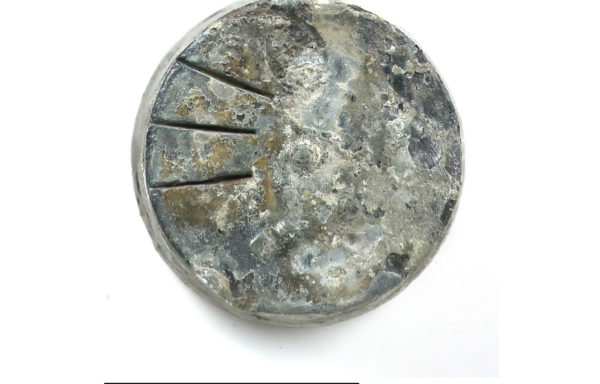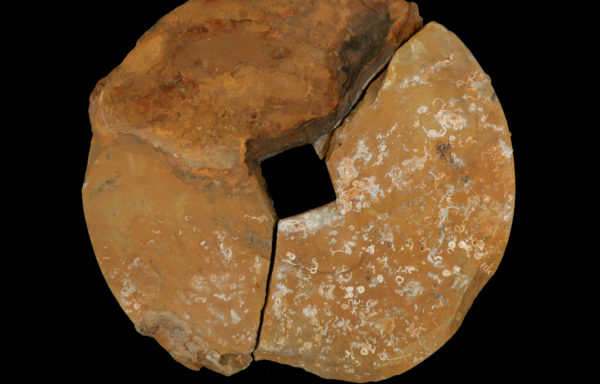Description
The two sounding leads, or plummets, belong to one of the most ancient classes of maritime technology. Such leads were used to determine the depth of water beneath the keel and the nature of the sea-bed. The leads were cast with ‘dimple’ in the bottom that could be ‘armed’ with tallow or grease so when the lead was recovered after sounding, it would bear an impression and carry traces of the sea-bed beneath. Combined with visual features along the coastline, this information would assist the pilot to establish the ship’s position. The depth of water and trend of the logline when the weight was on the sea floor could also inform the pilot of the direction of the tide or current.
The larger of the two leads [SCW796] recovered from the Swash Channel Wreck weighing 8.4kg or 17 Amsterdam Ponds is heavier than the deep-sea leads recovered of the Batavia weight around 6.8kg or 14 Amsterdam ponds and those recovered of the Vurgulde Draeck, also 14 pound (Green, 1973) and lighter than those mentioned in Witsen (1690).
